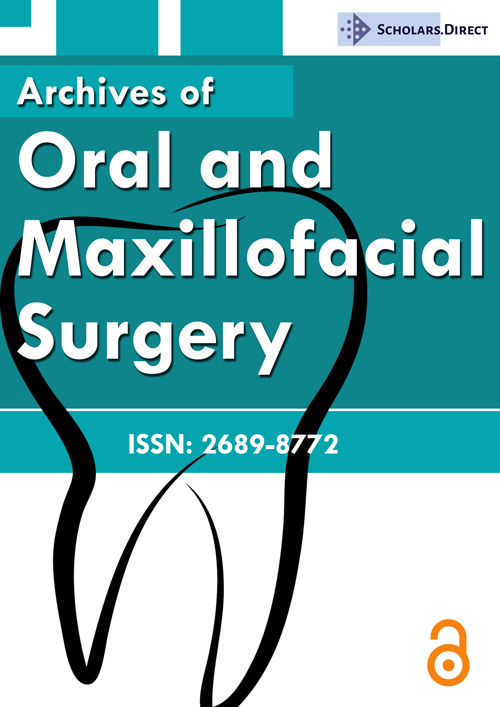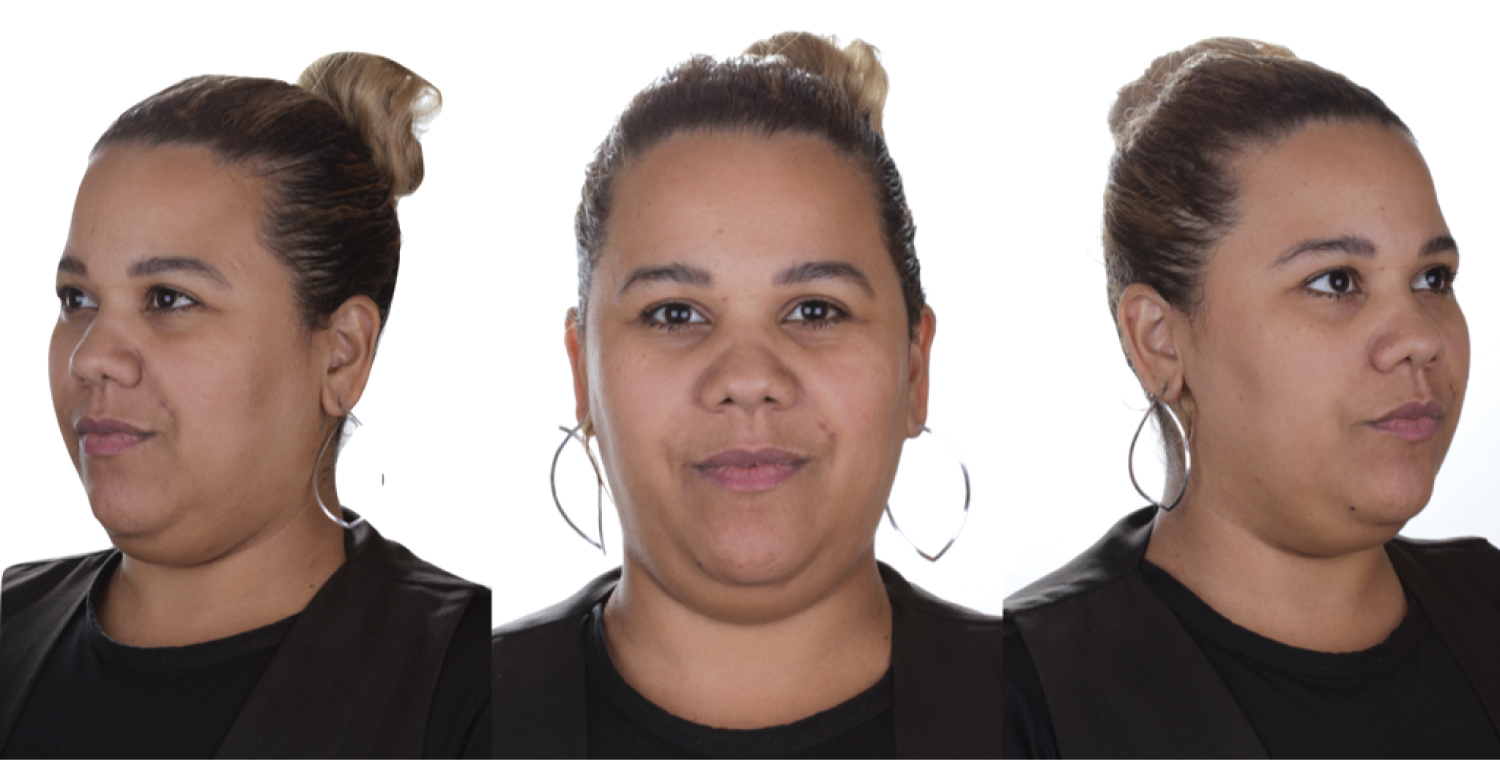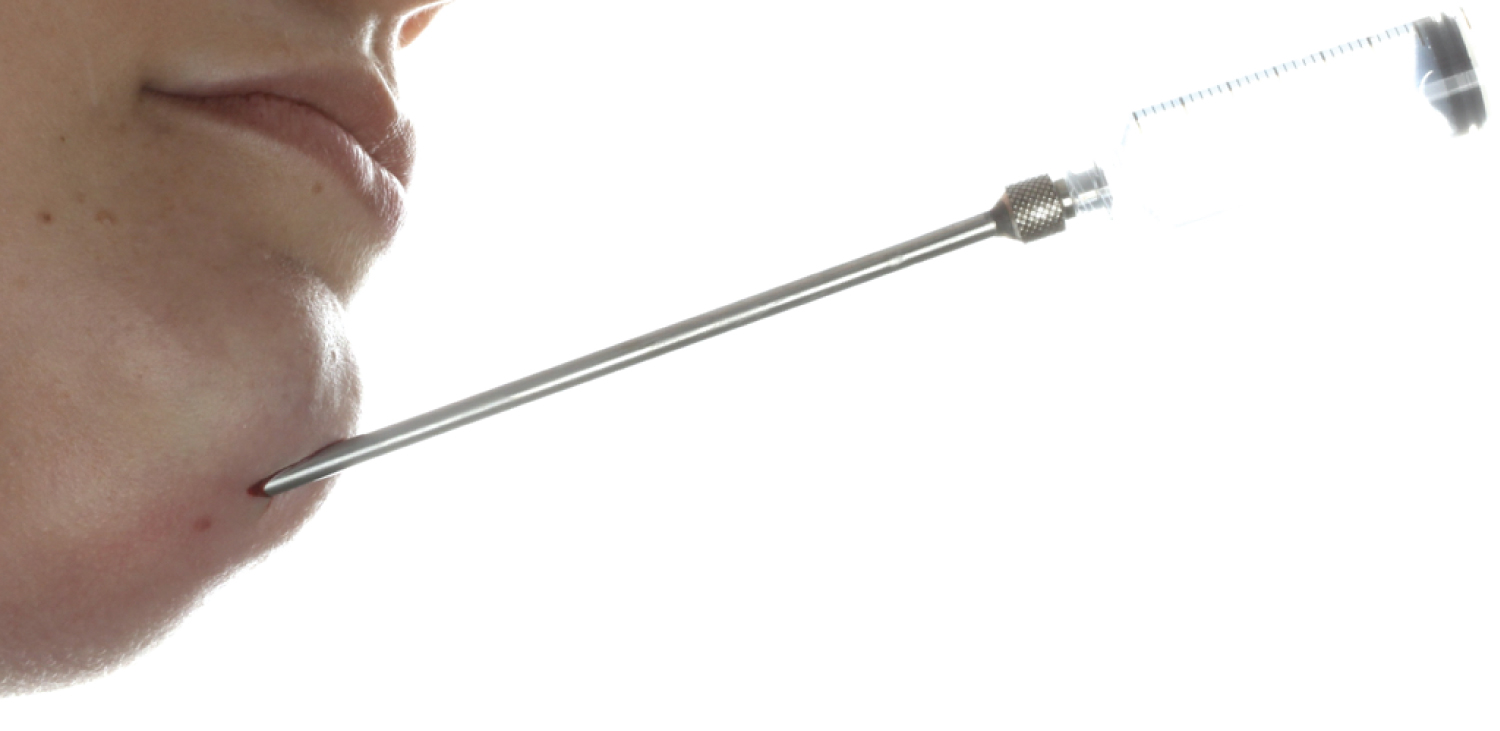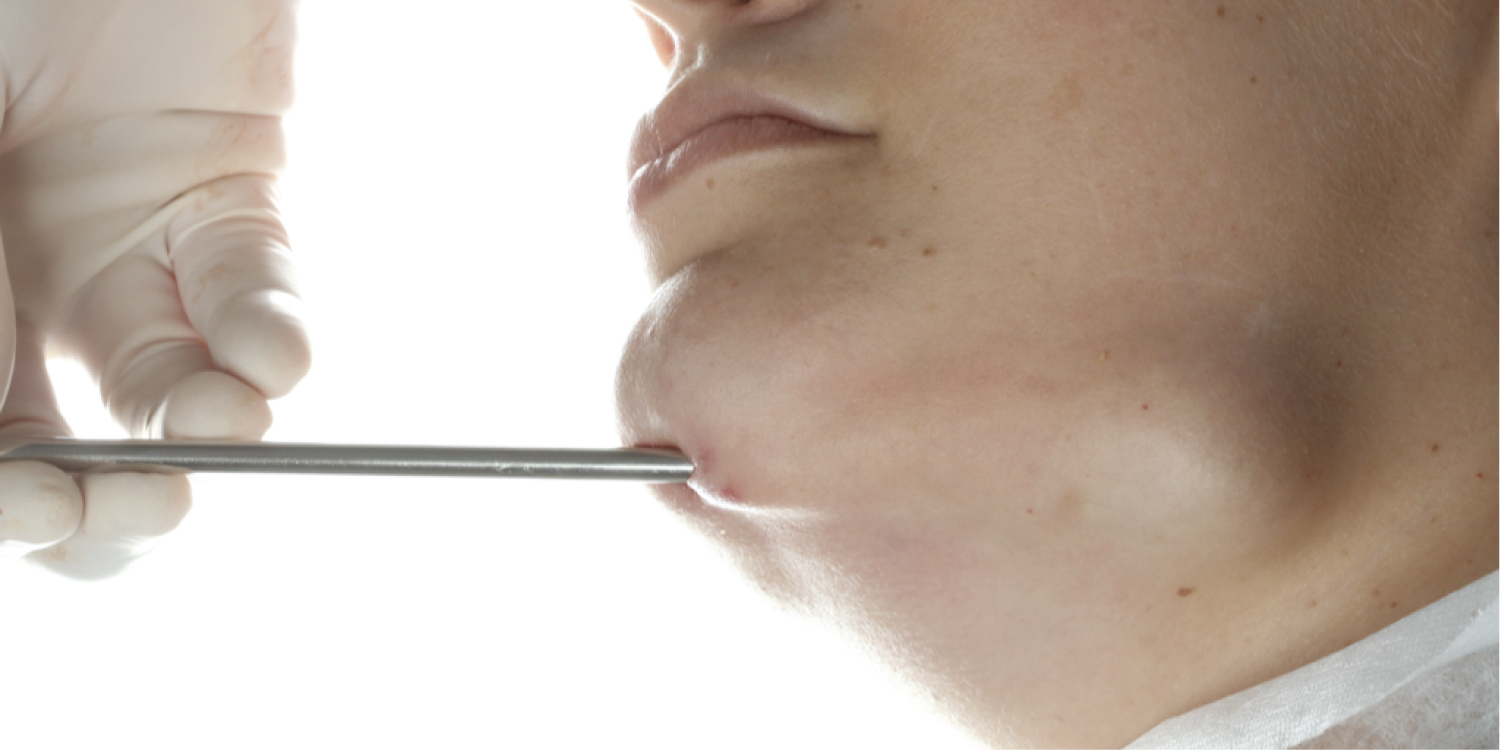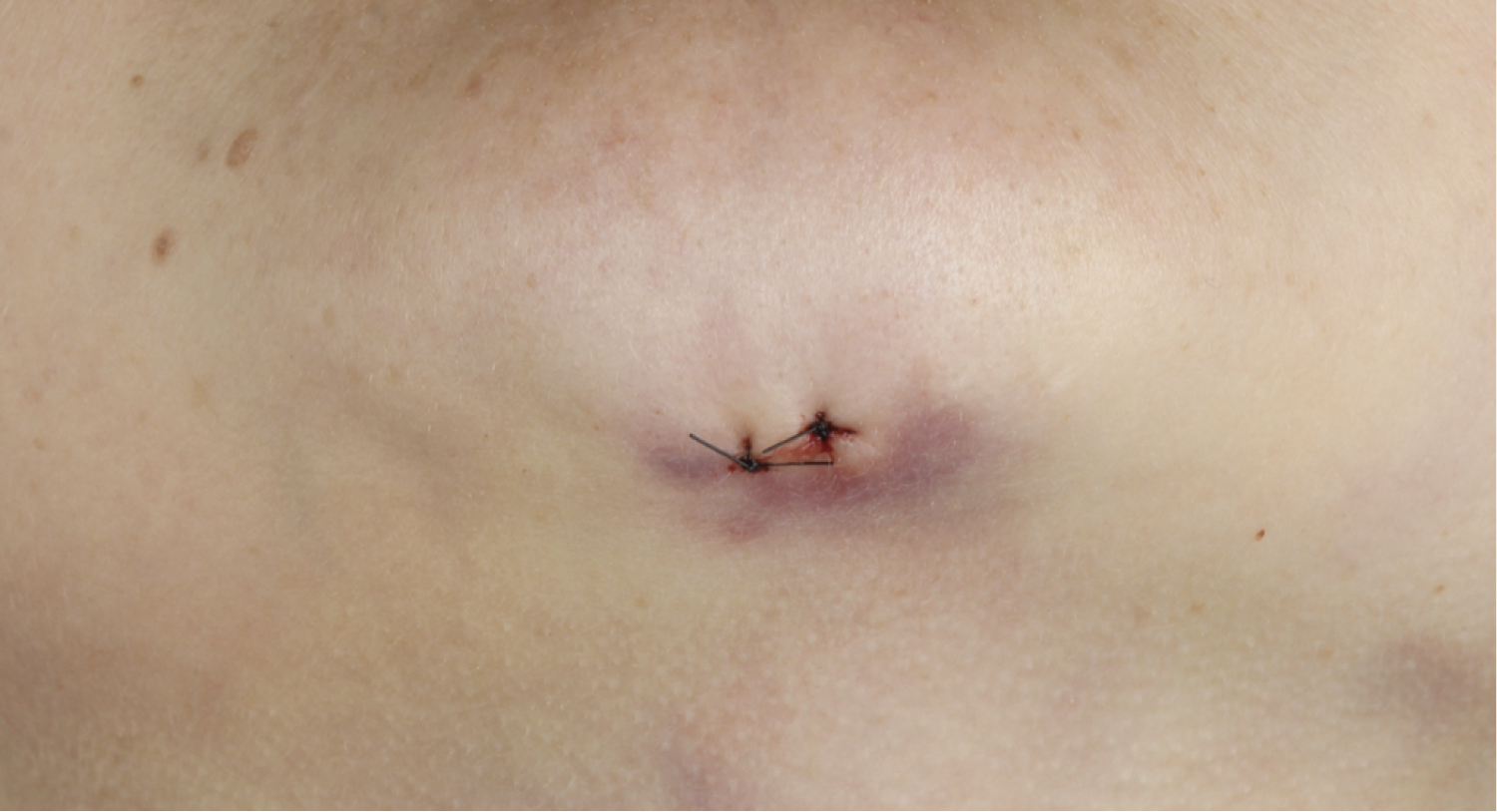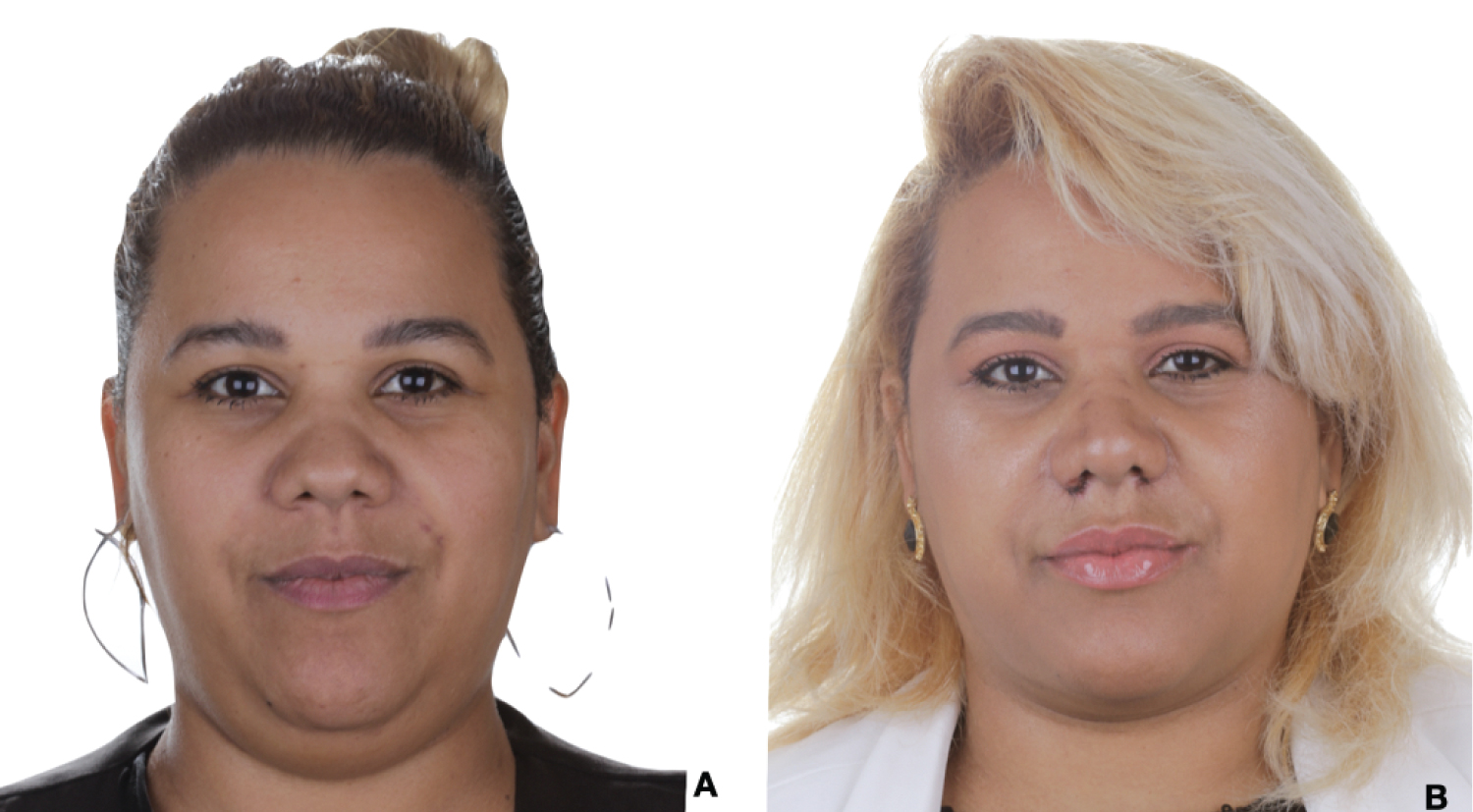Cervical Liposuction in Young Patient - Case Report
Abstract
For patients interested in obtaining tangible changes to their facial appearance and who have reasonable expectations to be achieved, the current cervical liposuction techniques are an excellent way to achieve predictable, positive and lasting cosmetic results. The present study aims to describe a case report of surgical cervical liposuction for the reduction of sub mental fat in young patient. Immediately following surgery, an improvement of the cervicomandibular angle was observed, the sub mandibular contour appeared more defined. In the final result, these changes made the patient appear younger and slimmer, which was very satisfied with the result of the treatment. Therefore, it is suggested that neck liposuction is a very effective rejuvenation technique allows very good and predictable results in young patient with double chin. Costs and risks are limited and it does not leave extensive scars.
Keywords
Neck, Surgery, Esthetics, Face.
Introduction
A well-contoured neck is an art, an imperative to an attractive appearance. A clean neckline conveys a feeling of youth, health, fitness, confidence and vitality and lends an appearance of determination, sensuality and beauty. Neck improvement is a high priority for almost all patients seeking facial rejuvenation, and the results of the "face lifting" procedures are judged, in large part, by the result obtained on the neck [1-3]. In this context, it is important to point out that cervical liposuction is one of the most rewarding clinical procedures of an aesthetic nature to be performed, as it presents low invasive rate, risk, cost, surgical time and recovery and, as such, patients are able to achieve major results, as well as positive, desired and lasting changes in facial appearance, achieving a better contour and angular definition of the jaw (rejuvenation) as opposed to the reduction and readjustment of anatomical fat compartments under the chin, often referred to as a double chin [1,4-6]. The present study aims to describe a case report of surgical cervical liposuction for the reduction of submental fat in young patient.
Case Presentation
A 30-year-old female dissatisfied with double chin. In clinical examination, was observed moderate accumulation of fat in submental region, giving the appearance of a double chin (Figure 1). The flaccidity profile of the region was also evaluated, and the moderate inelasticity was identified. The laboratory tests, blood count and glucose level, were requested for systemic evaluation of the patient. And the results showed results within the normal range. Preoperative medication used preventively: Cephalexin 500mg, 4 capsules 1 hour before surgery and Predisin 20mg - 1 hour before the procedure.
After asepsis of the skin with 2% chlorhexidine, the area to be treated was marked with the patient seated in an upright position: The first marking performed was the lower limit at hyoid level, then immediately we performed the marking on the mandibular border following or not the gravity sag formed by the migration of the nasolabial superficial fat pad, respecting a safety margin of approximately 1 cm from the edge of the commissure, due to the thin tissue thickness in this region.
Was performed local infiltrative anesthesia (1/2 tube of mepivacaine with vasoconstrictor, (Figure 2A) incision with a 15C blade (Figure 2B) of approximately 1.5 cm in the sub mental groove with a half blade. Klein cannula was used to introduce the solution and to promote hydro dissection and anesthesia, without active aspiration (Figures 3). Liposuction was performed with a duckbill cannula connected to a portable suction pump in successive back and forth movements, through previously defined paths, in and out and radially. The cannula hole was held down in relation to the skin initially, with the left hand holding the fatty tissue and the right hand holding the cannula. After that, the cannula orifice was kept facing upwards in relation to the skin. The cannula was activated only for suction when inserted into the fat (Figure 4).
A very thin layer of fat (a few millimeters) was left in place beneath the dermis, avoiding sub dermal suction and obtaining an adipocutaneous flap. At the end of the aspiration, a massage was performed in the direction of the access orifice to eliminate blood and residual liquid. Simple suture was performed using 6.0 nylon thread (Figure 5). Subsequently, we applied micropore over the incision, followed by an elastic adhesive bandage (Kinesio Tape), in order to promote adhesion of the skin to the underlying tissues and a compressive band to reposition tissues to avoid subcutaneous edema and fibrosis.
A very thin layer of fat (a few millimeters) was left in place beneath the dermis, avoiding sub dermal suction and obtaining an adipocutaneous flap. At the end of the aspiration, a massage was performed in the direction of the access orifice to eliminate blood and residual liquid. Simple suture was performed using 6.0 nylon thread (Figure 5). Subsequently, we applied micropore over the incision, followed by an elastic adhesive bandage (Kinesio Tape), in order to promote adhesion of the skin to the underlying tissues and a compressive band to reposition tissues to avoid subcutaneous edema and fibrosis.
Immediately following surgery, an improvement of the cervicomandibular angle was observed, the submandibular contour appeared more defined. The follow-up period was 1 year; evaluations are made every 3 months. In the final result, the most defined cervicomandibular angle and the most demarcated submandibular contour were observed. These changes made the patient appear younger, slimmer with a longer neck (Figure 6A and Figure 6B). The patient was very satisfied with the result of the treatment.
Discussion
For patients interested in obtaining tangible changes to their facial appearance and who have reasonable expectations to be achieved, the current cervical liposuction techniques are an excellent way to achieve predictable, positive and lasting cosmetic results [3,6]. However, an important and essential step in choosing the ideal cervical liposuction technique for a given case is an evaluation of the patient's history and a physical examination, which must be thorough and meticulous, in order to check for the presence or absence of deformities, as well as assessing the aesthetic condition itself, as well as the patient's desired result [1,6]. In the present case, a thorough anamnesis was performed and even though the patient was young and did not report any health problems, laboratory tests were requested.
In clinical examination, some authors suggest the use of monasebian classification system for subcutaneous fat: Grade I: no inelasticity, little or no subcutaneous fat; Grade II: Mild inelasticity with mild subcutaneous fat; Grade III: Moderate inelasticity, moderate subcutaneous fat and slight plasma bands; Grade IV: Severe inelasticity, severe subcutaneous fat and moderate to severe platysmal bands. Adult patients in good health, with a maximum weight of 30% above their ideal weight, who are between grades I, II and III of Monasebian and with reasonable expectations regarding the results of the surgery are candidates to perform the procedure [1,6-8]. In clinical examination of this case, was observed moderate accumulation of fat in sub mental region, giving the appearance of a double chin, and the moderate inelasticity, can be classified as Grade III.
The surgical technique consists of smooth and slow manual aspiration, using inlet and outlet movements using a cannula [6-9], how it was done in this case. At the end of the aspiration, a very thin layer of fat (a few millimeters) was left in place beneath the dermis, avoiding sub dermal suction and obtaining an adipocutaneous flap, because, some authors suggest that this layer serves to prevent the deep dermal component from adhering directly to the muscle fascia underneath and to prevent the flap from vascular (sub dermal plexus) damage that may lead to either partial flap necrosis or the formation of a skin pattern resembling cutis marmorated [6,7].
In the postoperative period was applied an elastic adhesive bandage (Kinesio Tape), in order to promote adhesion of the skin to the underlying tissues and a compressive band to reposition tissues to avoid subcutaneous edema and fibrosis, as suggested by most studies [1,8-10]. Following the removal of stitches, mild bruising and edema can be seen and may last for a few weeks. In this case report, the patient returned in 10 days for suture removal and mild edema was observed. After the initial 15 days, the patient can start post-operative lymphatic drainage for assist in the repair process. Because according to the literature, two to three weeks after surgery, gentle facial massages and ultrasound treatments can be used to smooth out any scar tissue or fibrosis that is in development [6,9].
Neck liposuction is a very effective and reliable rejuvenation technique that involves few complications [1,6,8-10]. In the present case, immediately following surgery, an improvement of the cervicomandibular angle was observed, the sub mandibular contour appeared more defined. In the final result, these changes made the patient appear younger and slimmer, which was very satisfied with the result of the treatment.
Conclusion
Neck liposuction is a very effective rejuvenation technique allows very good and predictable results in young patient with double chin. Costs and risks are limited and it does not leave extensive scars.
Conflict of Interest
The authors declare no conflict of interest.
Ethical Approval
A consent form for publication of the article was previously signed by the patient.
Funding
No funding received.
Informed Consent
Informed consent was obtained from all individual participants included in the study.
References
- Marten T, Elyassnia D (2018) Neck lift: Defining anatomic problems and choosing appropriate treatment strategies. Clin Plast Surg 45: 455-484.
- Thomas W W, Bloom J D (2017) Neck contouring and treatment of submental adiposity. J Drugs Dermatol 16: 54-57.
- Tong Y, Liu P, Wang Y, et al. (2018) The effect of liposuction cannula diameter on fat retention-based on a rheological simulation. Plast Reconstr Surg Glob Open 6: e2021.
- Larson J D, Tierney W S, Ozturk C N, et al. (2014) Defining the fat compartments in the neck: A cadaver study. Aesthet Surg J 34: 499-506.
- Habbema L, Tang J C, Sattler G, et al. (2018) Liposuction of the neck: Low incidence of nerve injury and other complications in 987 patients. J Drugs Dermatol 17: 30-34.
- Innocenti A, Andretto Amodeo C, Ciancio F (2014) Wide-undermining neck liposuction: Tips and tricks for good results. Aesthetic Plast Surg 38: 662-669.
- Collins P S, Moyer K E (2018) Evidence-based practice in liposuction. Ann Plast Surg 80(6S Suppl 6): S403-S405.
- Chia C T, Neinstein R M, Theodorou S J (2017) Evidence-based medicine: Liposuction. Plast Reconstr Surg 139: 267e-274e.
- Wells J H, Hurvitz K A (2011) An evidence-based approach to liposuction. Plast Reconstr Surg 127: 949-954.
- Keramidas E, Rodopoulou S (2016) Radiofrequency-assisted liposuction for neck and lower face adipodermal remodeling and contouring. Plast Reconstr Surg Glob Open 4: e850.
Corresponding Author
Natália Galvão Garcia, School of Dentistry, University Centre of Lavras, Minas Gerais, Brazil.
Copyright
© 2022 Vieira MG, et al. This is an open-access article distributed under the terms of the Creative Commons Attribution License, which permits unrestricted use, distribution, and reproduction in any medium, provided the original author and source are credited.

